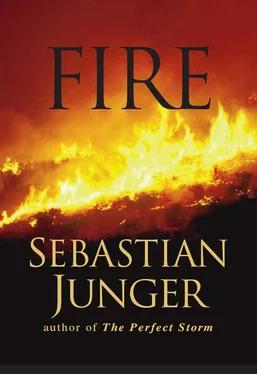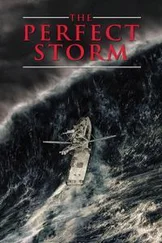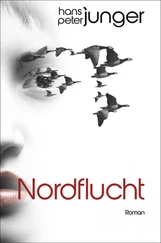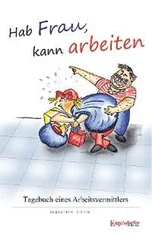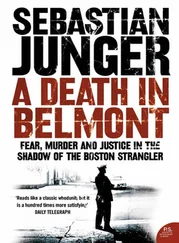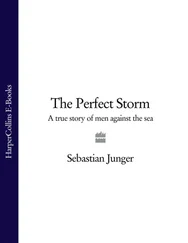“The arms trade in Africa works through brokers,” a Belgian arms-trafficking authority named Johan Peleman told me before I arrived in Freetown. “They usually have a former intelligence or military background, but at the same time they are businessmen—commodity traders, for instance…. A typical broker would be a Belgian based in a French hotel room supplying guns from, I don’t know, Lithuania, to a country neighboring the conflict zone. Documents would all look perfectly legitimate, but the arms end up with a rebel movement.”
A couple of days before leaving Sierra Leone, we drove out to the front. The taxi driver wouldn’t go beyond the town of Waterloo, so we got out and waited at a Nigerian Army checkpoint until a truckload of Kamajors drove up. They were headed twenty miles up the road to Masiaka, where a big battle had just taken place. They pulled us on board and veered back onto the road. There were about twenty of them, leaning against the sides of the truck and passing a joint around while the jungle blurred by on either side. At the deserted towns, soldiers who had been stranded would run out to try to wave us down, and going up through Occra Hills, we slowed to a crawl on the inclines while groups of Westside Boys watched us pass, pumping their guns in the air and screaming. From time to time we saw ambushed trucks with their engine parts sprayed out across the road, and around Songo Junction there was the body of a rebel who’d been killed two days earlier. His corpse had turned foul so quickly on the hot asphalt that no one had bothered to drag him off.
Masiaka was at a crossroads that controlled access to the entire rest of the country; without it Freetown was basically under siege, and the rebels had held it for the past several days. But the Westside Boys had driven them out just hours earlier, and when we arrived, they were cranked out of their minds, either on coke or on the battle itself, and were milling around the town square, shooting their guns off. The Kamajors clambered down and joined in the shooting. Some government soldiers walked up, and within minutes an argument had broken out: something about who was doing the real fighting around here. An officer in the government forces began dressing down a Kamajor commander, and the Kamajor suddenly backed up a few steps and cocked his machine gun. The officer cocked his gun, and the Kamajors started cocking theirs, and suddenly everyone in the town square was screaming.
I glanced around for some cover, but all I could find was a concrete culvert along the road. We edged away and climbed into a pickup truck with some government soldiers. The rebels were in the bush a few miles away and a gun battle between Kamajors and government soldiers wasn’t even close to being out of the question; it was time to get out of there. We drove back through the destroyed towns of Magbuntoso and Jama and then past the Nigerian forward positions and the Jordanian defenses around the airfield. Freetown was crowded and loud, the markets thronged with people and the streets completely choked by traffic. A British warship was visible out in the harbor. British paratroopers had dug bunkers into the hillside next to Aberdeen Bridge.
Africa stopped at Aberdeen. Europe began. We sat down at the terrace of the Mammy Yoko Hotel and ordered cold beers while the sun set and off-duty soldiers swam laps in the pool. Within a day we were clearing customs in Conakry and boarding an overnight flight to Belgium. Sankoh was caught, in the end—spotted by an alert neighbor as he tried to sneak back into his house. Although the RUF released all the original UN hostages, they took more in June. Two foreign journalists, Kurt Schork of Reuters and Miguel Gil Morena de Mora of the Associated Press, were killed by rebels in a roadside ambush near Rogberi Junction. The rebels attacked Bo and Kenema and then withdrew to where they’d been three weeks earlier. The war continued up-country, although accounts of it rarely made it into the international press.
Very little had changed, really. Except that a few more people were dead.
The fighters were down by the river, getting ready to cross over, and we drove out there in the late afternoon to see them off. We parked our truck behind a mud wall, where it was out of sight, and then walked one by one down to the position. In an hour or so, it would be dark, and they’d go over. Some were loading up an old Soviet truck with crates of ammunition, and some were cleaning their rifles, and some were just standing in loose bunches behind the trees, where the enemy couldn’t see them. They were wearing old snow parkas and blankets thrown over their shoulders, and some had old Soviet Army pants, and others didn’t have any shoes. They drew themselves into an uneven line when we walked up, and they stood there with their Kalashnikovs and their RPGs cradled in their arms, smiling shyly.
Across the floodplain, low, grassy hills turned purple as the sun sank behind them, and those were the hills these men were going to attack. They were fighting for Ahmad Shah Massoud—genius guerrilla leader, last hope of the shattered Afghan government—and all along those hills were trenches filled with Taliban soldiers. The Taliban had grown out of the madrasahs, or religious schools, that had sprung up in Pakistan during the Soviet invasion, and they had emerged in 1994 as Afghanistan sank into anarchy following the Soviet withdrawal. Armed and trained by Pakistan and driven by moral principles so extreme that many Muslims feel they can only be described as a perversion of Islam, the Taliban quickly overran most of the country and imposed their ironfisted version of koranic law. Adulterers faced stoning; women’s rights became nonexistent. Only Pakistan, Saudi Arabia, and the United Arab Emirates recognize their government as legitimate, but it is generally thought that the rest of the world will have to follow suit if the Taliban complete their takeover of the country. The only thing that still stands in their way are the last-ditch defenses of Ahmad Shah Massoud.
The sun set, and the valley edged into darkness. It was a clear, cold November night, and we could see artillery rounds flashing against the ridgeline in the distance. Hundreds of Taliban soldiers were dug in up there, waiting to be attacked, and hundreds of Massoud’s soldiers were down here along the Kowkcheh River, waiting to attack them. In a few hours, they would cross the river by truck and make their way through the fields and destroyed villages of no-man’s-land. Then it would begin.
We wished Massoud’s men well and walked back to the truck. The stars had come out, and the only sound was of dogs baying in the distance. Then the whole front line, from the Tajik border to Farkhar Gorge, rumbled to life.
I’d wanted to meet Massoud for years, ever since I’d first heard of his remarkable defense of Afghanistan against the Soviets in the 1980s. A brilliant strategist and an uncompromising fighter, Massoud had been the bane of the Soviet Army’s existence and had been largely responsible for finally driving them out of the country. He was fiercely independent, accepting little, if any, direction from Pakistan, which controlled the flow of American arms to the mujahidin. His independence made it impossible for the CIA to trust him, but agency officials grudgingly admitted that he was an almost mythological figure among many Afghans. He was a native of the Panjshir Valley, north of Kabul, the third of six sons born to an ethnic Tajik army officer. In 1974, he went to college to study engineering, but he dropped out in his first year to join a student resistance movement. After a crackdown on dissidents, Massoud fled to Pakistan, where he underwent military training. By 1979, when the Soviet Union invaded Afghanistan to prop up the teetering Communist government, Massoud had already collected a small band of resistance fighters in the Panjshir Valley.
Читать дальше
